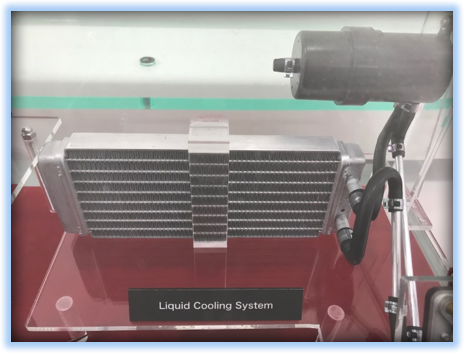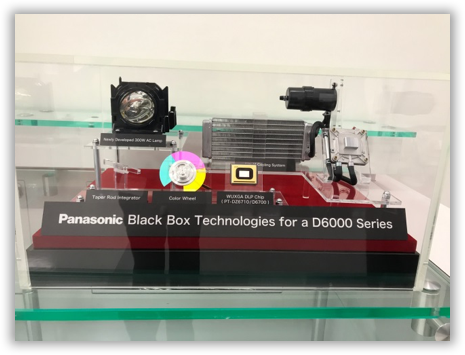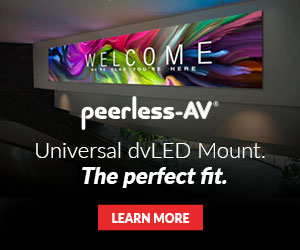In December of last year, I had the opportunity to visit Panasonic’s Harrison, NJ technical research and training facility. It was a fantastic opportunity to peek behind the curtain, as it were, to see the technology that continually sets Panasonic apart from their competitors.

Let’s start with projectors. Panasonic has been manufacturing projectors for over 35 years. Their new Solid Shine series projector has done away with the traditional lamp and replaced it with LED and laser componentry that gives the user 20,000 hours of maintenance-free operation. So, if you used this projector ten hours a day for a year, it would be over five years before one even thought of a component failure.


The units feature a reliable cooling system and dust resistant sealed optics. The unit runs cooler as well and has an eco-save option that will cut power consumption by almost 30%. The instant on/off capability of the unit increases productivity – no waiting for a lamp to come to full brightness.


The most impressive moment of my projector tour was the shootout against a well-known competitor. Both had optimal settings configured (I checked). The results are below, taken with my lowly cell phone camera. It clearly shows the distinction between one company’s idea of white vs Panasonic’s. Also, notice the edges of the competitors’ screen as the brightness fades at the edges.
Panasonic is a major manufacturer of broadcast-grade studio cameras and monitors. The technology that Panasonic incorporates into those cameras shows up across their lines. Their new AW-UE70 is one example. It can deliver 4K image quality via HDMI, USB or over IP. The four-drive lens system enables high image quality zooming in the 4K format. Absolutely stunning results for a PTZ camera!
The coolest thing I saw while I was there was Panasonic’s Link Ray technology (not to be confused with the unsung hero of distorted guitar, Link Wray). Using your smartphone camera and Link Ray app, the user points to a light source (e.g. display), the app reads the information, connects to the Link Ray platform, and imports content destination info – usually a URL. The app then connects to the destination content server and downloads the information to your phone. I watched a Panasonic engineer put together content for display that included pictures and text. When the file was uploaded to the display, I used the app and instantly the information was provided to my phone. I see this technology transforming retail, wayfaring, transportation centers (airports, train/bus stations), and municipal applications – the list is endless. If configured, the user has the ability to view the information in multiple languages. The technology is effective at a distance. You don’t have to be directly on the light source for the app to receive the information.
Last but certainly not least was my visit to the display lab and looking at the quality of Panasonic displays. Panasonic also manufactures very cool touchscreen displays. What sets this display apart from its competitors is that the built-in whiteboard does not require an external PC to run the whiteboard software. There is a floating menu bar that makes the operation of the unit easy and intuitive. One can even annotate on an external device and it will show up on the display. It can share still images, video and audio with included Wi-Fi-Certified Miracast technology. The display has the ability to extend, duplicate or set up a second screen from your computer as well. Full HD 1080p resolution is supported. The user can even bring a USB storage device for playback directly from the display. The unit also supports DIGITAL LINK, Panasonic’s connection system based on HDBaseT technology that supports the transmission of HDMI, uncompressed 4K, HD video and control commands via CAT5e and Cat6 cabling.
I wish I could have had a week at the Panasonic facility instead of just one day. So much cool technology, so little time…








